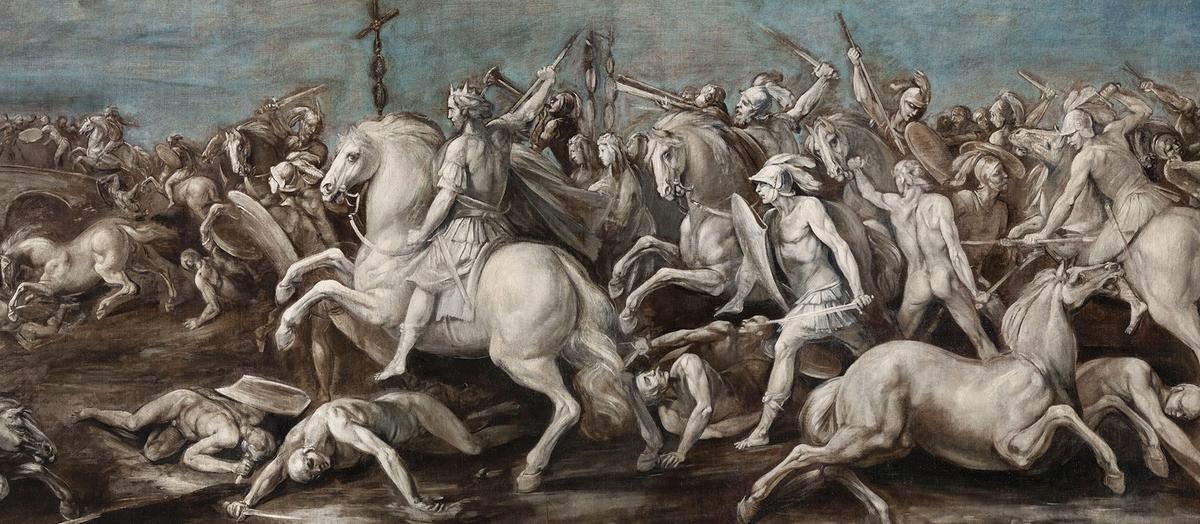PRICE RANGE: €2m-€750,000

Giuseppe Cesari or “Il Cavaliere d’Arpino” (around 1635-40)
Victory of Constantine
Giuseppe Cesari or “Il Cavaliere d’Arpino” (around 1635-40)
Galerie Canesso
This 3.8m-wide oil painting on canvas has been hidden away in a private palazzo in Ferrara for years. It was made by the Mannerist Giuseppe Cesari, who counted the popes Clement VIII and Sixtus V as his patrons and briefly had a young Caravaggio working at his studio. The dynamic and sketch-like painting, in which the horses are as expressive as the people, shows the Battle of Milvian Bridge (AD312), when Constantine defeated Maxentius under the sign of the cross. The battle marked both the beginning of Constantine’s conversion to Christianity and a decisive win that led him to become the sole Roman Emperor.

Tödlein; Attributed to Balthasar Permoser (around 1685)
Tödlein
Attributed to Balthasar Permoser (around 1685)
Julius Böhler
This striking Tödlein, a personification of death, rather unusually takes the guise of a pilgrim with a large hat and scallop shells that reference the Camino de Santiago pilgrim route. This small memento mori made of boxwood is not for the squeamish: reptiles and amphibians crawl along the decaying, sinewy body, and one creature appears ready to burrow into the figure’s open abdomen. The sculpture is attributed to the Salzburg-born sculptor Balthasar Permoser. It is thought to have been made in around 1685 in Florence, where the artist lived for 14 years, and may have belonged to the noble Florentine Frescobaldi family. More recently, it comes from thecollection of the Italian operatic baritone Titta Ruffo, who owned it until his death in 1953; it remained with his heirs until 2010. The Starnberg-based dealer is asking €850,000.
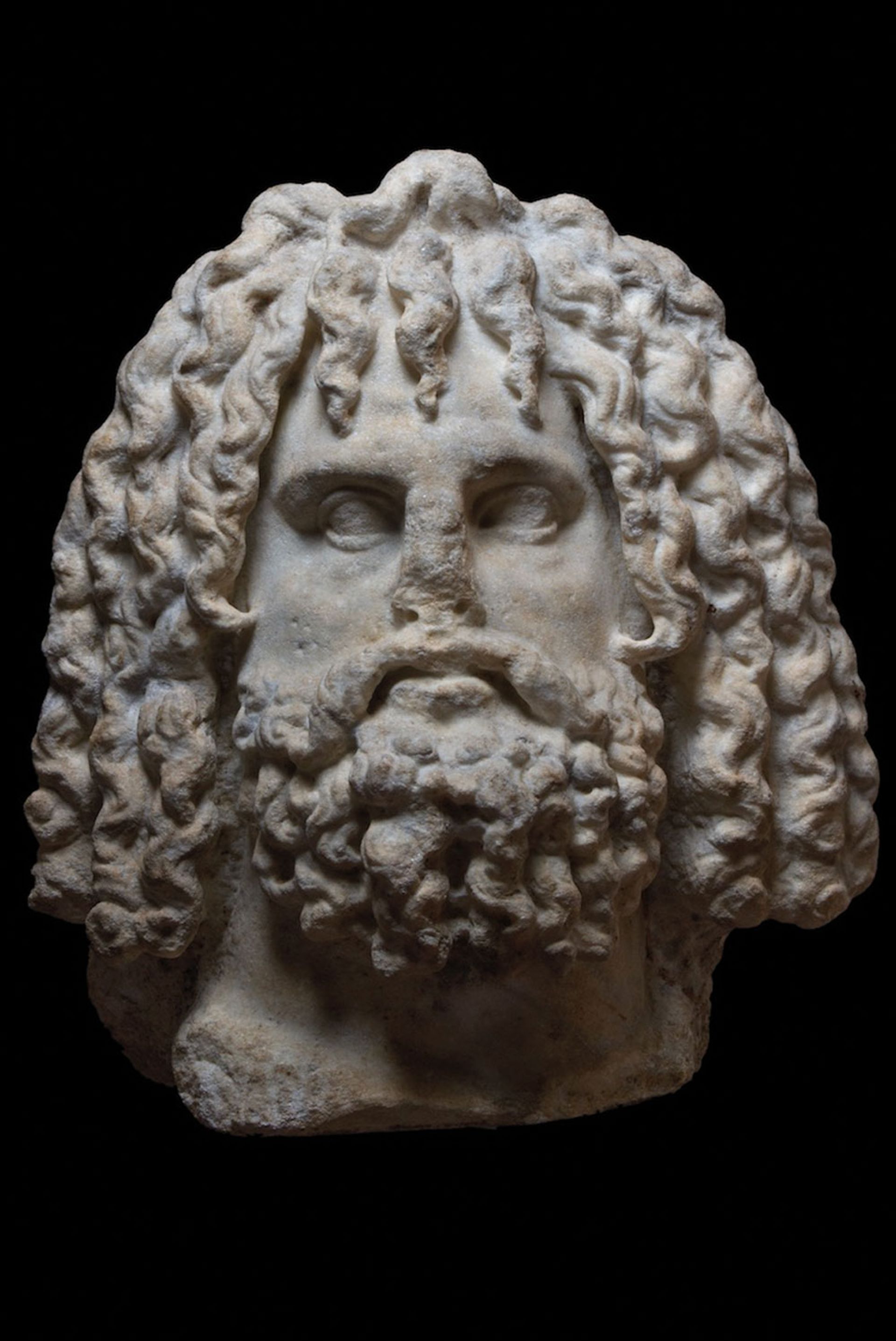
Colossal head of Serapis Roman (2nd century AD)
Colossal head of Serapis
Roman (2nd century AD)
Galerie Chenel
The Paris gallery is making its debut at Tefaf Maastricht with a two foot-tall head of Serapis, a Greco-Egyptian god revered for his healing powers. His worshipers believed Serapis would visit the infirm in their sleep in order to prescribe treatments to their illnesses. The marble head, which shows the god with his characteristic long curly hair and beard, was made a half-century after his cult was introduced by Ptolemy I (reign 305-283BC), the founder of the Ptolemaic dynasty that ruled Egypt until the Roman conquest in 30BC. The sculpture was discovered in Akhmim, Upper Egypt, in 1904 and sold at Drouot in Paris a year later, where it was purchased by the French art dealer René Gimpel (the brother-in-law to dealer Joseph Duveen). It passed to Gimpel’s heirs, with whom it has remained until recently. The head is priced at €750,000.
PRICE RANGE: €500,000-€151,000
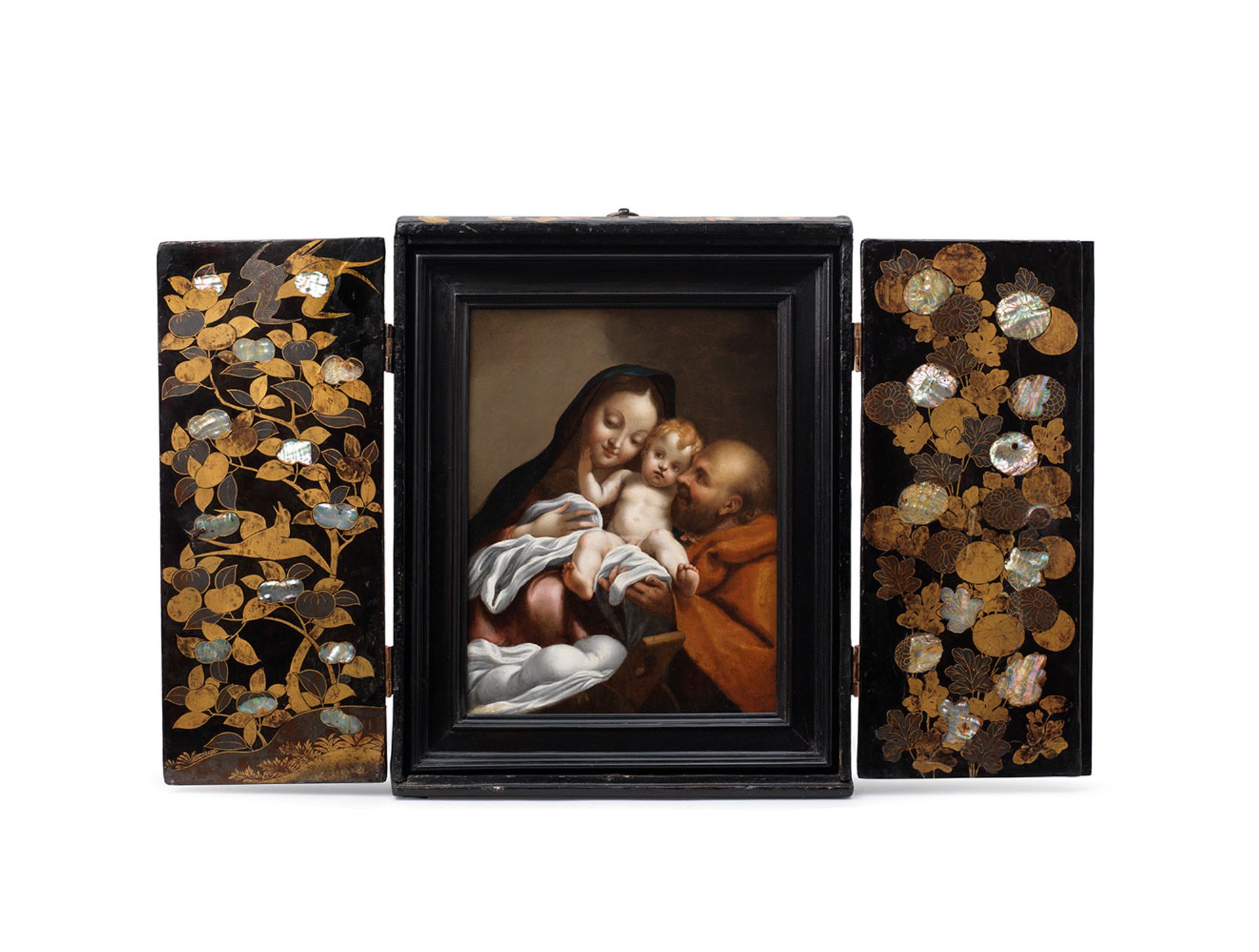
Oratory - Japan, Momoyama period (1573-1615)
Oratory
Japan, Momoyama period (1573-1615)
Jorge Welsh Works of Art
Lacquered oratories or seigan such as this were often commissioned by Christian missionaries who began to arrive in Japan in the 1540s. Modelled on European triptychs, the use of black lacquered Hinoki cypress and pine decorated with gold and silver paint and mother-of-pearl inlays gives the piece an Eastern twist. The centrepiece is an oil painting on copper of the Holy Family based on a lost composition by Correggio. A school to train Japanese artists in the Western style of painting was founded in Nagasaki in 1583 (and later moved to Macau) by the Jesuit missionary Giovanni Niccolò to keep up with the demand for such pictures. Edicts calling for the expulsion of Christians from Japan means that few such paintings survive. It’s on offer for a mid-six-figure sum.
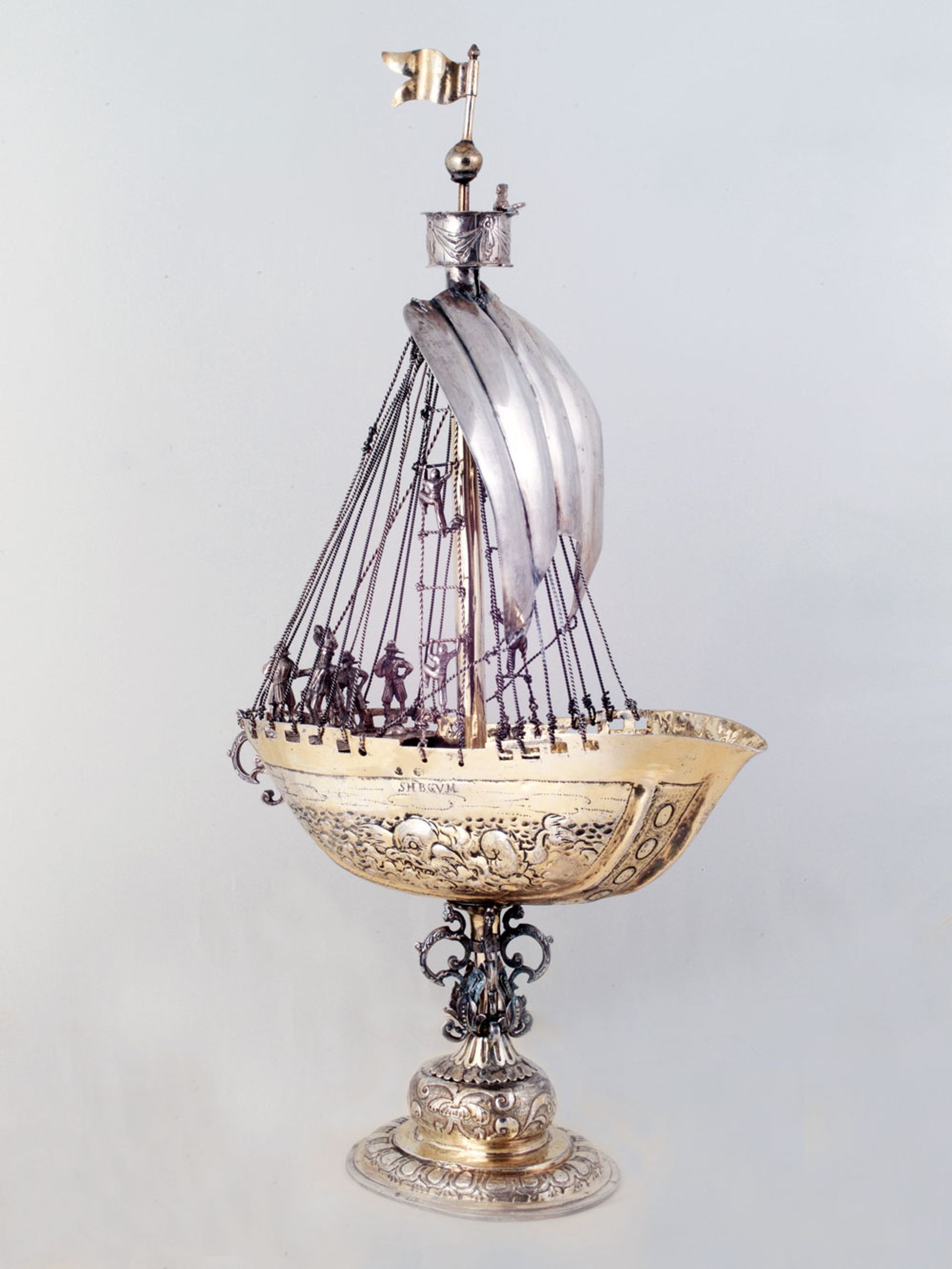
Silver gilt drinking vessel in the form of a ship - Tobias Schaumann I (around 1620)
Silver gilt drinking vessel in the form of a ship
Tobias Schaumann I (around 1620)
Helga Matzke Kunsthandel
At one point or another, we have all found ourselves running out of things to say at a dinner party. But a guest at a grand 17th-century German house had to look no further than the table decorations to find inspiration. Silver drinking vessels in the form of stags, horns, shells and ships were conversation starters. Ships such as this elaborate example that captures the moment its crew had raised the alarm were made in the great silver centres of Nuremberg and Augsburg, which specialised in the production of sailing vessels. This rare survival bears the hallmark for the city of Augsburg and the maker’s mark of Tobias Schaumann I (around 1577-1647). It is priced in the mid-six-figure range.
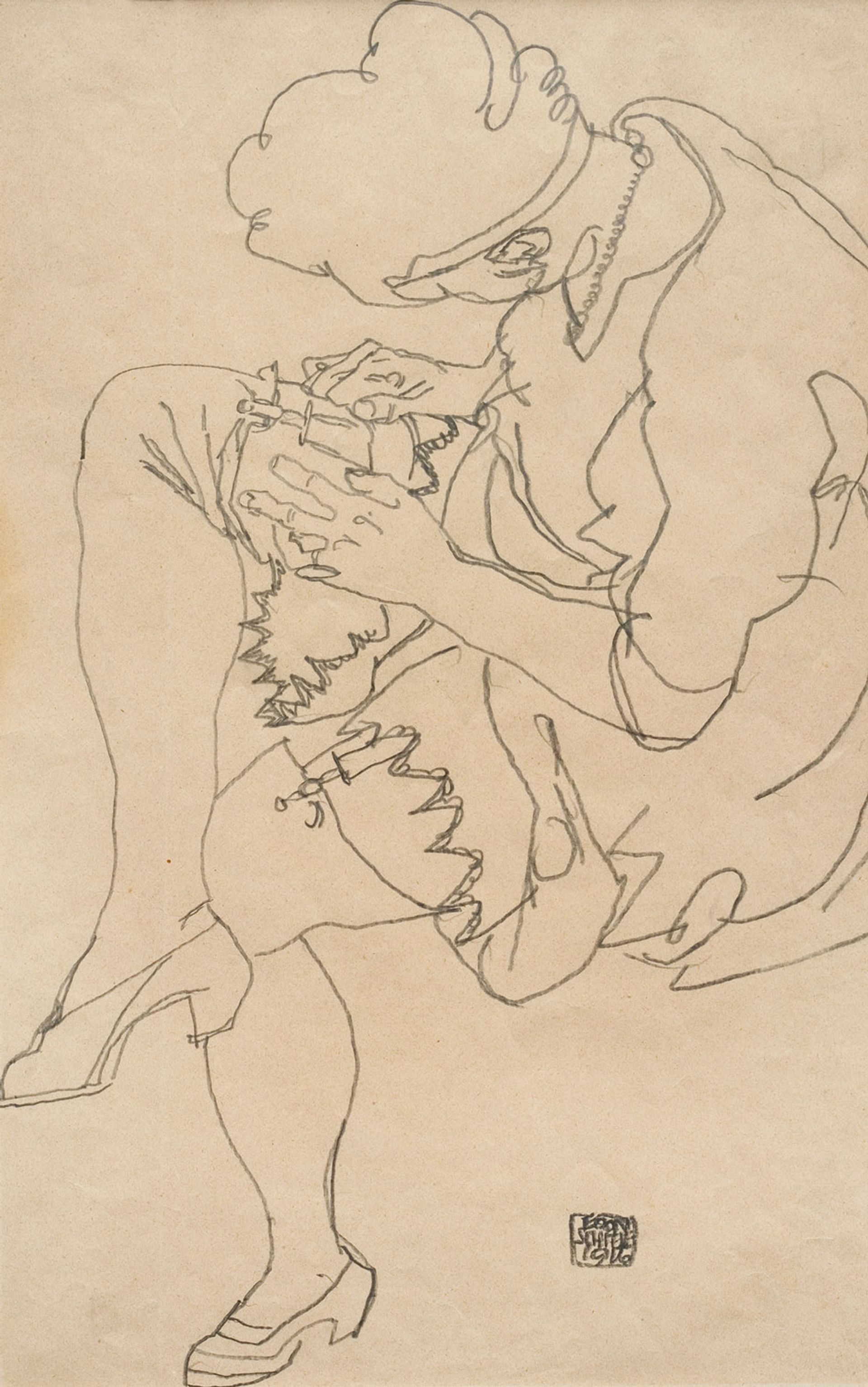
Seated Woman - Egon Schiele (1916)
Seated Woman
Egon Schiele (1916)
Kunsthandel Wienerroither & Kohlbacher
This drawing of Schiele’s wife Edith adjusting her stockings was made when the Austrian Expressionist was conscripted to the military during the First World War. The couple, married in 1914, lived separately during the early years of Schiele’s service. It was not until May 1916 that they were allowed to stay together in a cottage in the village of Mühling, and so this drawing, dated 1916, was probably sketched during this period of blissful cohabitation. But their happiness was relatively short-lived: Edith succumbed to the Spanish Influenza on 28 October 1918 and Schiele died three days later. Seated Woman (€380,000) is just one of the Schieles on W&K’s Viennese Modernism-themed stand: a 1911 gouache of a woman, once owned by the art dealer Serge Sabarsky, is on offer for €1.7m.
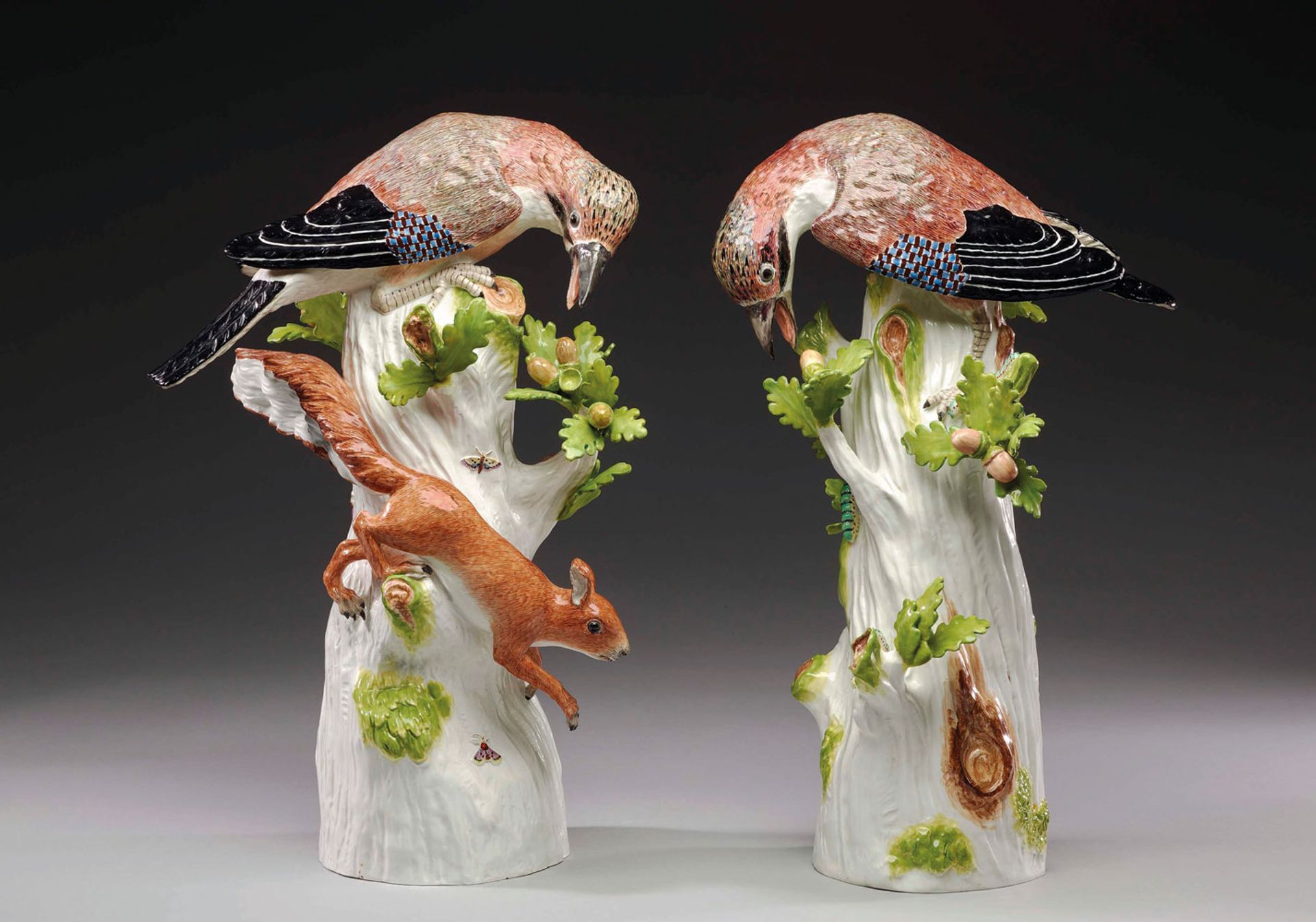
Meissen pair of jays - Johann Joachim Kaendler (models 1735 and 1739-40; manufacture and decoration around 1740)
Meissen pair of jays
Johann Joachim Kaendler (models 1735 and 1739-40; manufacture and decoration around 1740)
Röbbig München
By 1735, when the earlier of these porcelain figures was made, Johann Joachim Kaendler’s career had already reached great heights. Four years earlier, at the tender age of 25, he had been appointed court sculptor to Augustus II, the Elector of Saxony and King of Poland. Just two years later, he would become the master model maker at the Meissen porcelain manufacturing company, where his creations helped to boost the firm’s reputation for innovative design. Although Kaendler made a variety of sculptures, he is most known for his realistic depictions of animals. (He was commissioned by porcelain enthusiast Augustus II to create a menagerie for his Japanese Palace in Dresden.) The gallery is asking €320,000 for the pair.

Trace de pas dans la nuit - Le Corbusier (1948-57)
Trace de pas dans la nuit
Le Corbusier (1948-57)
Laffanour Galerie
This tapestry by Le Corbusier is one of six such textiles produced between 1948 and 1957 by the French manufacturer Pinton Frères, the celebrated Aubusson atelier known for collaborating with artists such as Alexander Calder and Fernand Léger, among others. The work, made of woven wool and measuring nearly 3m tall, is “a rarity on the market, as most of these tapestries remain in their original collections and are seldom sold—this one shows the same atypical detail and very specific character of works in other mediums that Le Corbusier created around this period”, a gallery associate says. A similar tapestry can be found in the Museum of Modern Art in New York. This one is priced at €180,000.
PRICE RANGE: €150,000-€50,000
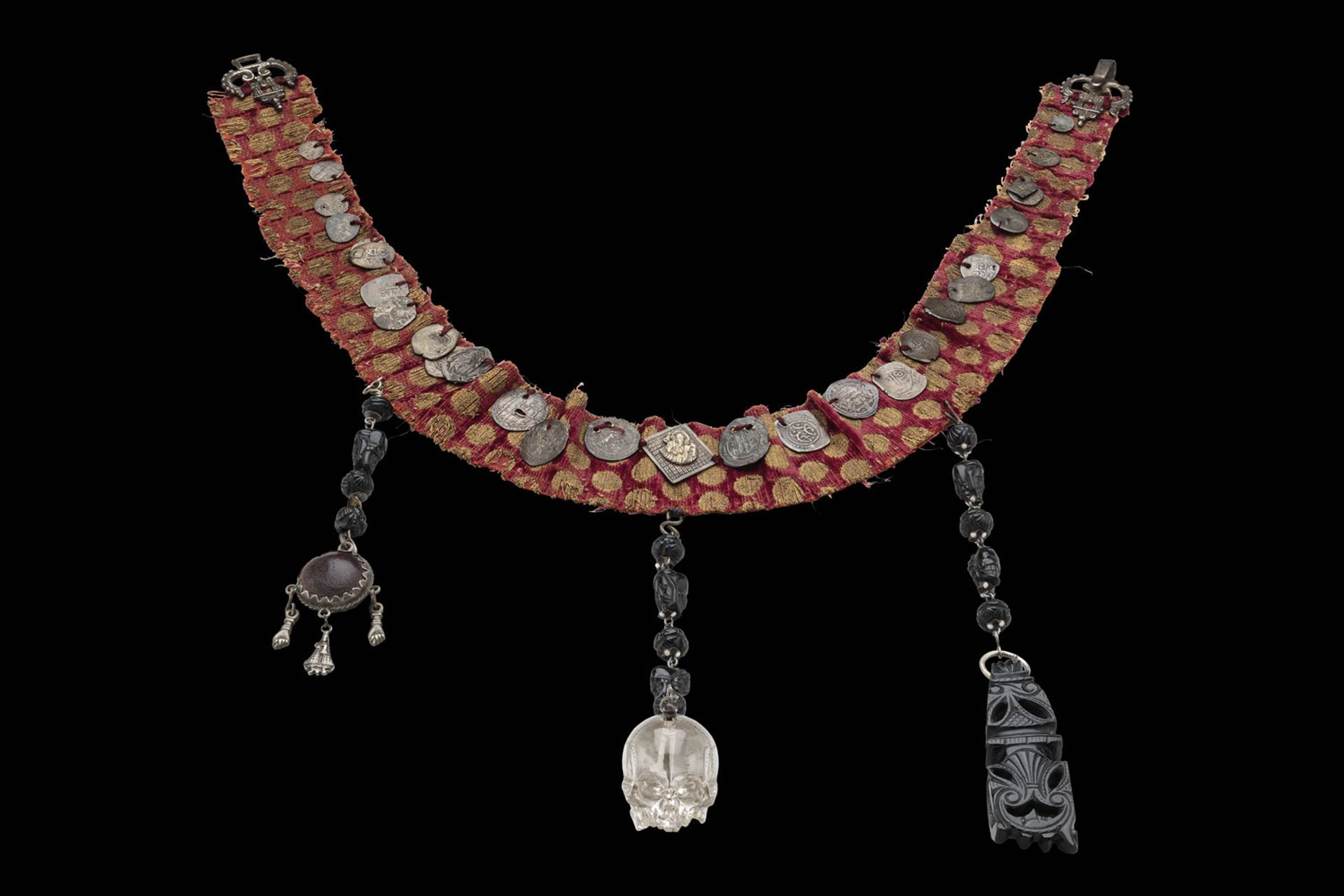
Magic belt - Spain, Castile (17th century)
Magic belt
Spain, Castile (17th century)
Les Enluminures
Coins, jet and white enamel rosary beads, amulets, a cabochon set in silver and a rock-crystal skull: this “magic belt” contains a smorgasbord of trinkets sewn onto a fine piece of red velvet brocade with gold thread, created by a 17th-century Spaniard in the hope that the accumulative power of these talismans would protect the wearer. Magic belts were typically made for children or adults susceptible to bouts of sickness. They were thought to ward off evil spirits as well as disease, and could be passed down from generation to generation. Not many from this period survive. The belt is priced at $145,000.
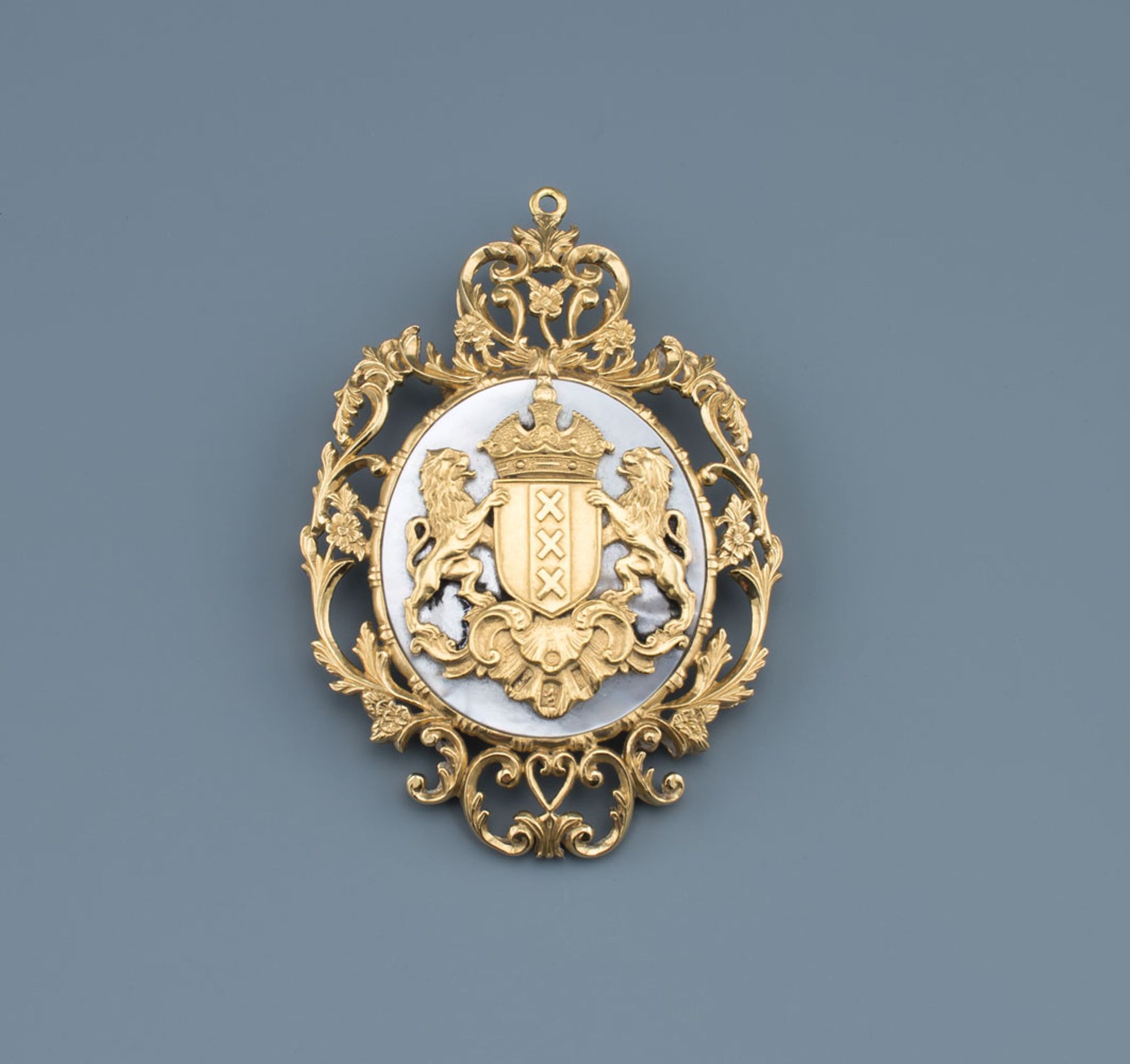
Gold and mother-of-pearl pendant - Gerardus van Dorp (1762)
Gold and mother-of-pearl pendant
Gerardus van Dorp (1762)
John Endlich Antiquairs
This 8.7m-high mother-of-pearl pendant mounted in a decorative gold setting is inscribed with the city of Amsterdam’s coat of arms. It belonged to Egbert de Vrij Temminck, the city’s on-and-off mayor from 1749 to 1784, whose name is inscribed into the mother-of-pearl on the verso. As well as enjoying a long political career, De Vrij Temminck also served as the director of the Dutch West India Company from 1738 to 1742. He was a supporter of the American Revolution and one of the first European politicians to recognise America’s independence. The pendant is being sold by the Haarlem-based gallery for €85,000.
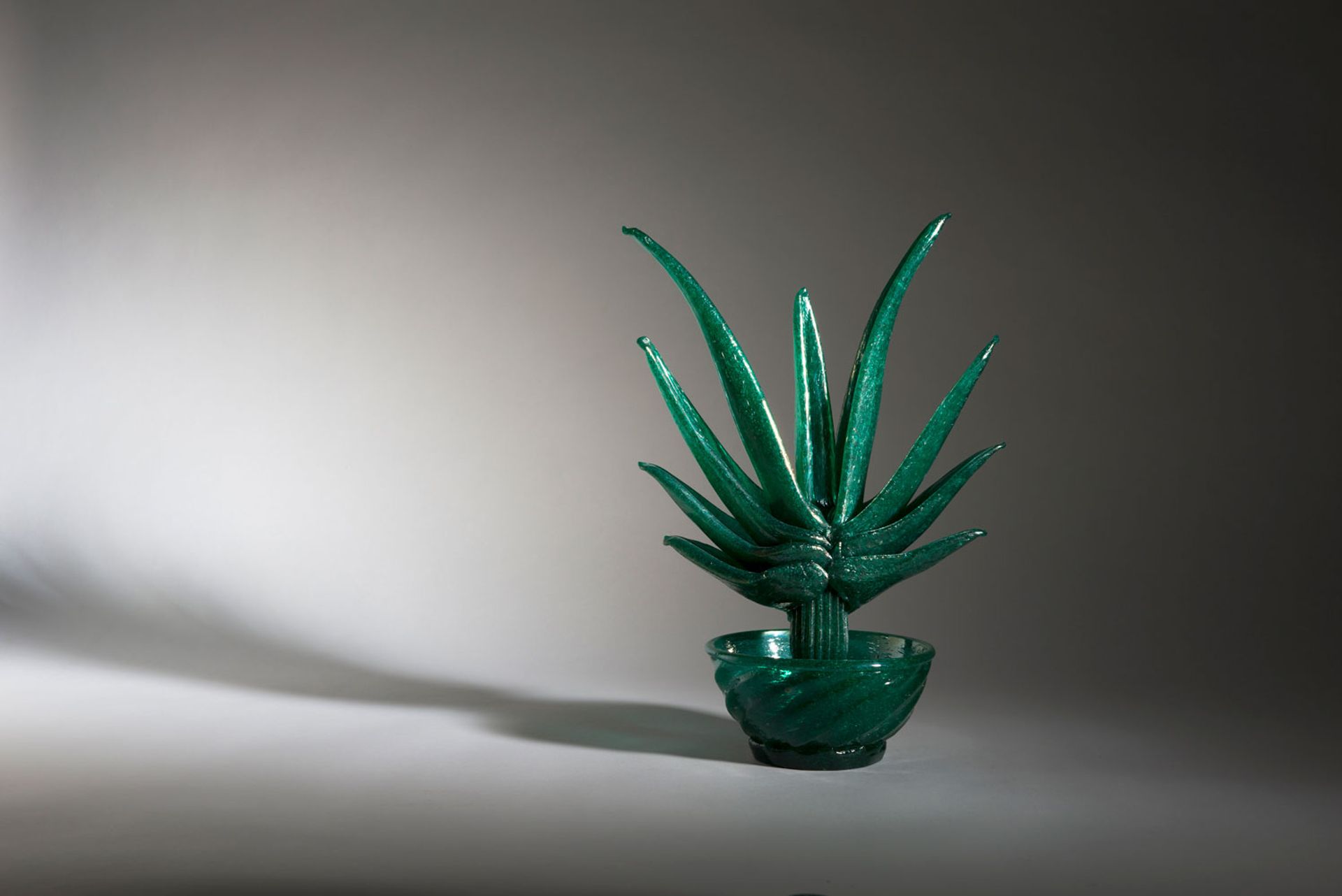
Succulent plant - Napoleone Martinuzzi for Venini Murano (1929)
Succulent plant
Napoleone Martinuzzi for Venini Murano (1929)
Marc Heiremans
This glass succulent by the Italian artist Napoleone Martinuzzi is made of “pulegoso” glass, an intentionally polluted and bubbled glass type with a plastic-like finish that the artist developed by adding raw petroleum and other elements to the glass mixture. Martinuzzi, the artistic director of Venini Murano in the mid-1920s, premiered the bohemian technique in the 1928 Venice Biennale, where this piece was first shown. Martinuzzi is best known for creating “enlarged versions of ancient glass vessels and decorative objects like animals and plants. Succulents, in particular, were very popular during the interbellum, and their sculptural aspect must have been very appealing to the artist,” the dealer Marc Heiremans says. The Belgian gallery is asking €60,000 for the piece.
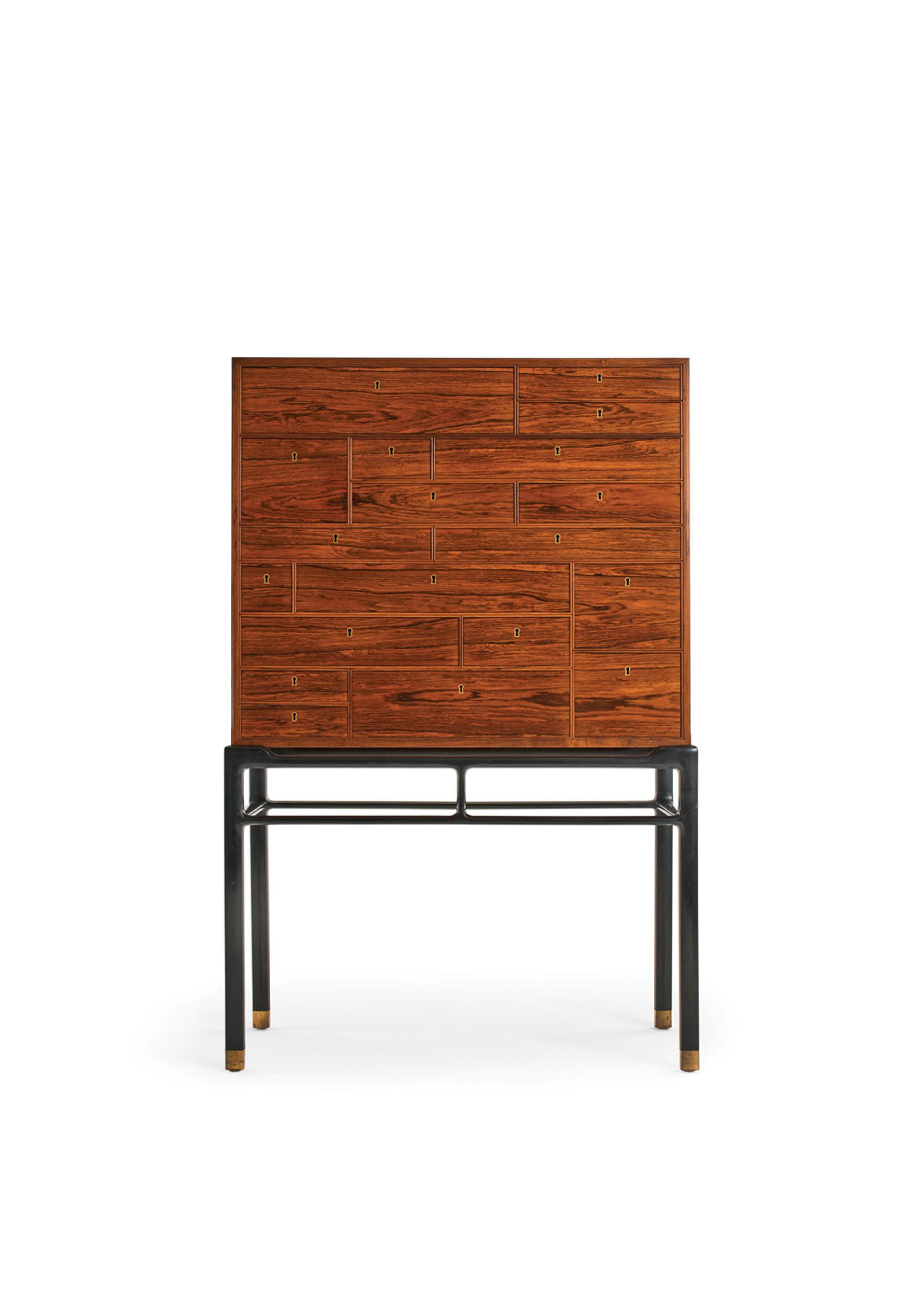
Cabinet - Jørgen Berg/William Christensen (1959)
Cabinet
Jørgen Berg/William Christensen (1959)
Dansk Møbelkunst
This rosewood, stained beech and ebonised wood cabinet, created by the Danish designer Jørgen Berg for the Illums Bolighus flagship store in Copenhagen, comprises 19 drawers, one with a hidden compartment, and a brass Chinoiserie base. The made-to-order work, one of around ten editions known to exist, was produced by the cabinetmaker William Christensen. It was the priciest piece offered in the design emporium’s 1959 catalogue. “It was more expensive than a Finn Juhl chieftain chair,” says the gallery’s director, Dorte Vaernø. Berg designed few pieces in his career and “remains relatively unknown—this piece speaks for itself rather than relies on a famous creator, standing out from other Danish pieces of the period yet still drawing clear lines to Danish Modernism”, Vaernø says. The piece is on offer for €60,000.
FIVE OBJECTS FOR €5,000 AND UNDER
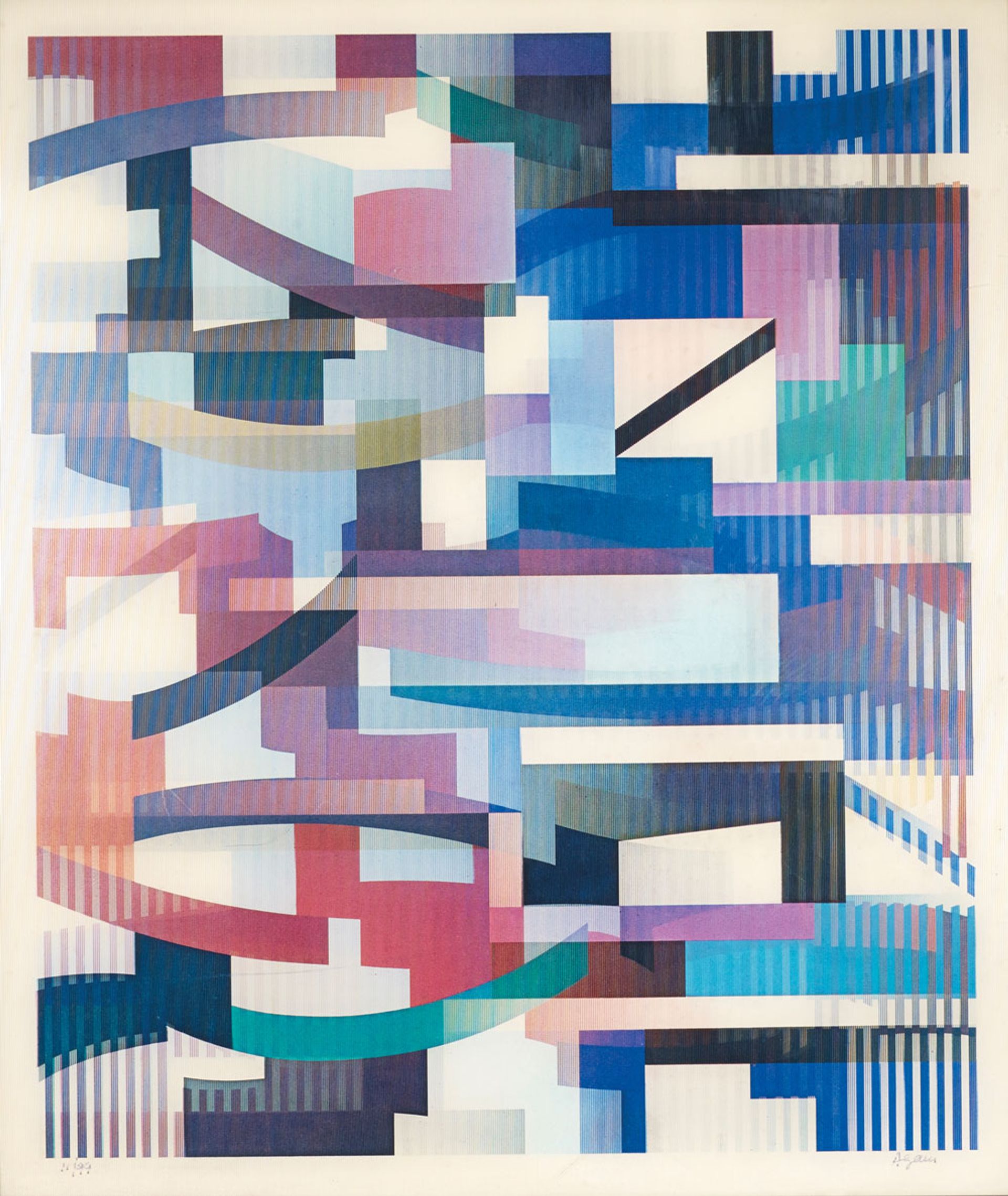
Yaacov Agam's work can be found at the William Weston Gallery
€5,000
A leading figure in the 1950s kinetic art movement, the Israeli artist Yaacov Agam is most often associated with Agamographs, which are prints overlaid with a special zig-zagging surface of Perspex. This gives the effect of optical ridges, meaning the work looks different depending on the angle from which it is viewed. Union (around 1980, number 11 of an edition of 99) can be found on the stand of William Weston Gallery.
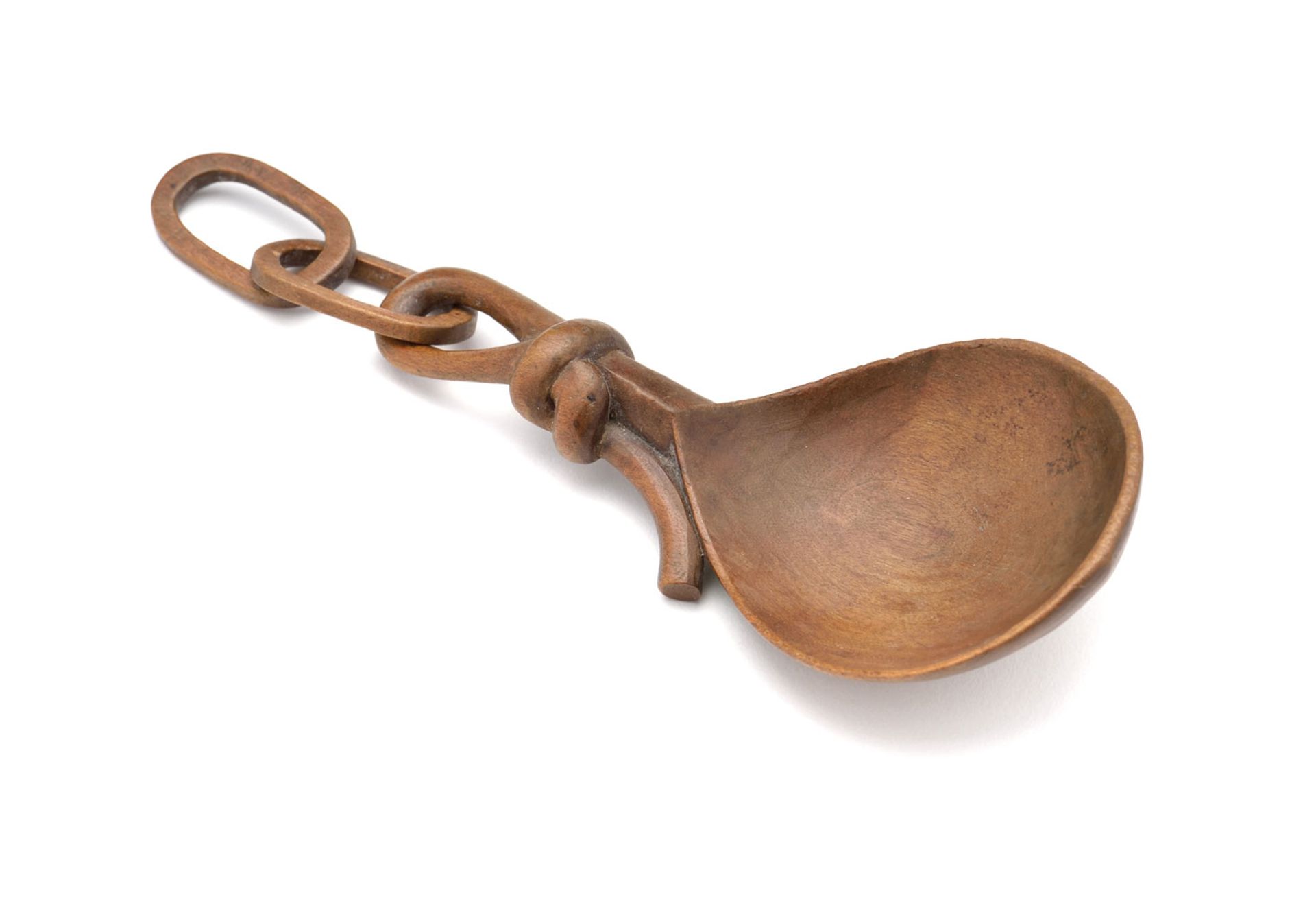
Decorative spoon from Kunstkammer Georg Laue
€4,800
This decorative spoon’s fine chain handle and knot, carved from pear wood, symbolise the union of marriage and would have been given as a wedding gift. This example, on sale with Kunstkammer Georg Laue, was made in south Germany in around 1600. Although early wedding spoons such as this are rare, a similar piece can be found in the Royal Danish Collection at Rosenborg Castle in Copenhagen.
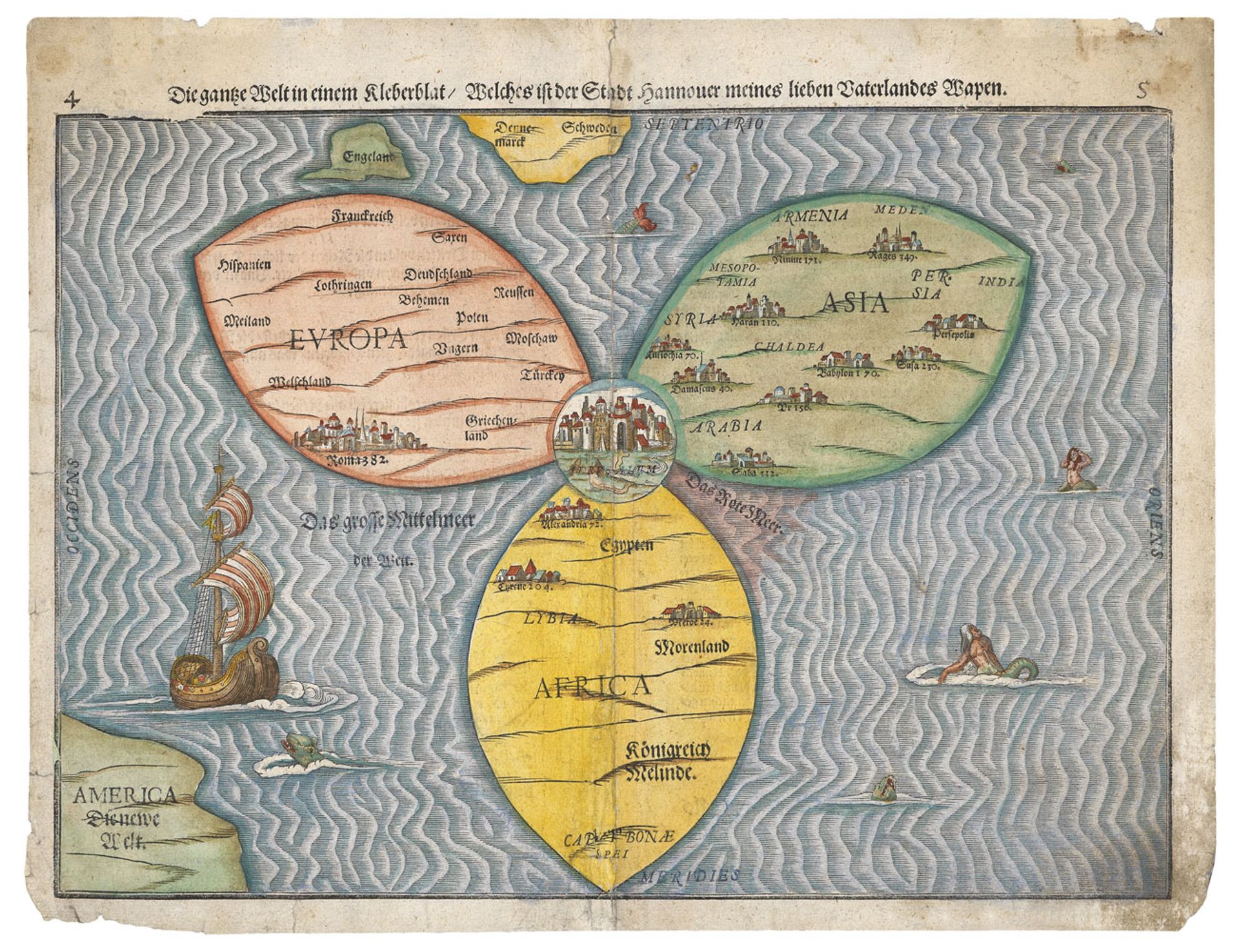
Heinrich Bünting’s map, Die gantze Welt in ein Kleberblat (The World in a Cloverleaf)
€4,050
The three-leaf clover, or trefoil, is a symbol of the German city of Hanover. It served as the inspiration for the Protestant theologian Heinrich Bünting’s map, Die gantze Welt in ein Kleberblat (The World in a Cloverleaf). Made in 1581, the hand-coloured, wood-engraved map shows the world as three principal continents: Europe in red, Asia in green and Africa in yellow, with the city of Jerusalem in the centre. The London and New York dealer Daniel Crouch Rare Books has priced the work at £3,600.

This frog-human hybrid is on sale with New York’s Merrin Gallery
€3,950
An ancient artisan from Colima in West Mexico carved this tactile piece of polished green stone into the image of a man—or is it a frog? Looking at it straight on, the little sculpture looks like a man sitting on his haunches, but if you turn the object on to its front, the image suddenly becomes that of a frog—the man’s ears become the frog’s eyes and his hairline becomes an amphibian’s downturned mouth. The discreetly drilled holes in the shoulders suggest this carving may have once been worn as a pendant. The piece, made some time between 200BC and AD300, is on sale with New York’s Merrin Gallery for £3,500.
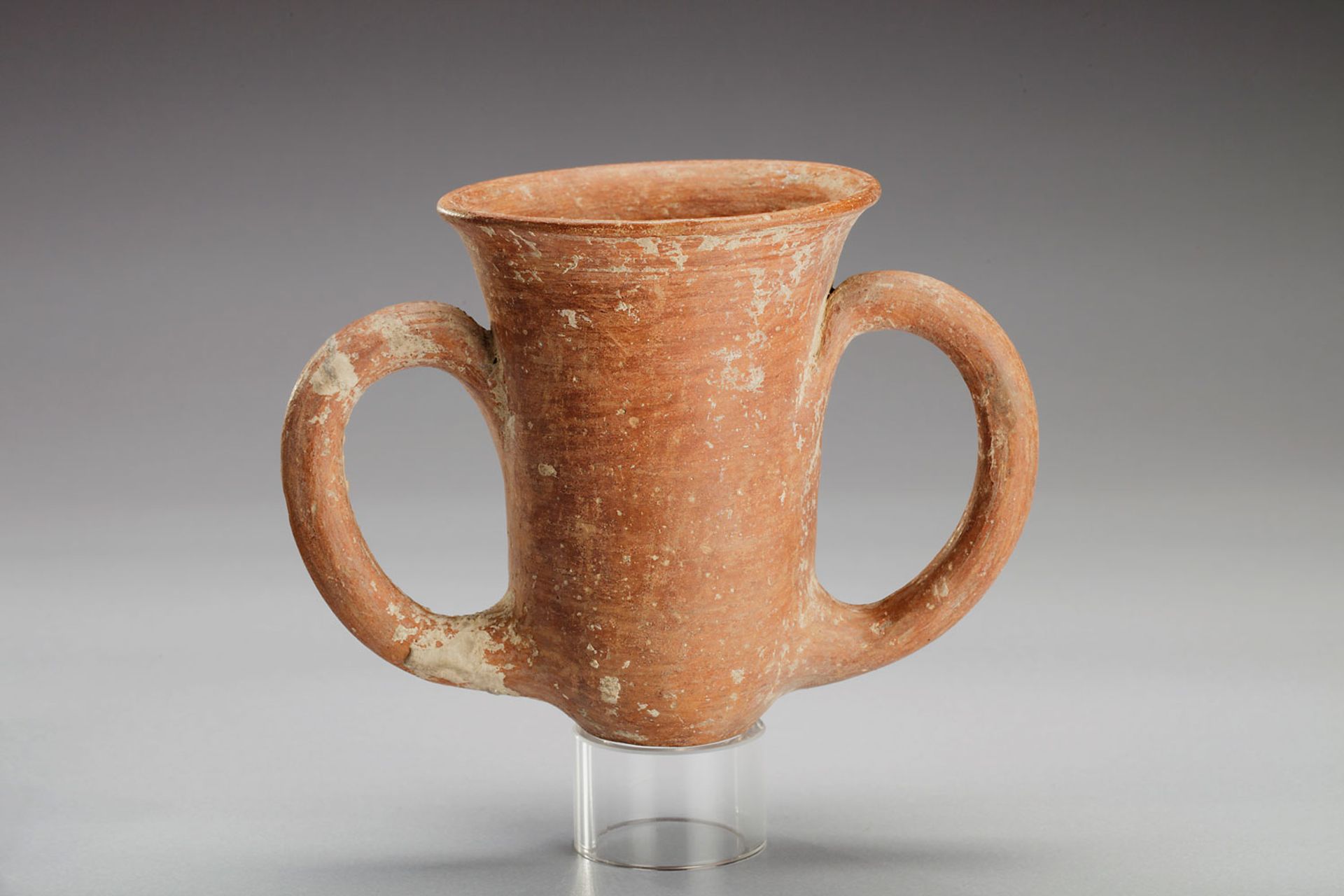
The piece is being offered by Amsterdam’s Kunsthandel Mieke Zilverberg
€3,500
This beaker, made between 2200BC to 1800BC, is believed to have come from the ancient city of Troy in modern-day Turkey. The two-handle vessel would have been filled with beer or wine and passed around as a communal drinking cup. The controversial German archaeologist Heinrich Schliemann, the first major excavator of Troy, liked to categorise his finds with the names of objects described in Homer’s epics, and so this type of beaker has come to be known as a depas cup after Homer’s term depas amphikypellon. The piece is being offered by Amsterdam’s Kunsthandel Mieke Zilverberg.


